REVIEW – SORD Field Pack, Large
PRODUCT: Field Pack, Large
MANUFACTURER: SORD Australia
DESCRIPTION:
This is SORD Australia’s entry into the combat field pack market. It’s an external frame, top-loading pack, with modular capacity for MOLLE pouches.
REVIEW NOTES:
Just one thing about this review – I know I’ve done a lot of reviews on the Crossfire kit I’ve bought. So, in the interests of balance and fairness, I have sought out and paid for one of the competing entries to Crossfire and will apply the same thought process to it.
Many thanks to my wallet for purchasing this pack. I’ll raise a jar of high grade booze to my parents for instilling a semi-decent work ethic and beating the daylights out of me when I was a smart arse. Another jar to be raised to myself for the hard work, intestinal fortitude and ability to turn up for work on time, sober and without telling clowns what I really think of them to maintain my current state of employment.
I know SORD Australia makes awesome pouches and fighting rigs. Probably the best currently available in this country. I was extremely interested in seeing what they offered in packs. Comments from one of the blokes who own/manage/run SORD suggests that this pack was based on the venerable ALICE and the Wilderness Equipment SAS Mk6 pack.
For those of you not in the know, when I was a young dopey digger, the Wilderness Equipment SAS pack was THE pack to own as an armed professional here Down Under. Quite a few of my old section commanders had them, they were considered bloody nice packs. They were based on the old Pommy Bergen, designed to be worn with belt mounted webbing (TA-50 for all you gringo’s) with some advanced features and ergonomics compared to anything else available in civvy street or ADF issue at the time.
The original designer of the SAS pack is currently working with Crossfire, and you can still see his work in my previous reviews of the DG-3, DG-6 and DG-8.
Ok, now having got the thought process behind the review out of the way, let’s continue on. During this review, I shall refer to the pack as the FPL (Field Pack, Large) for ease of writing.
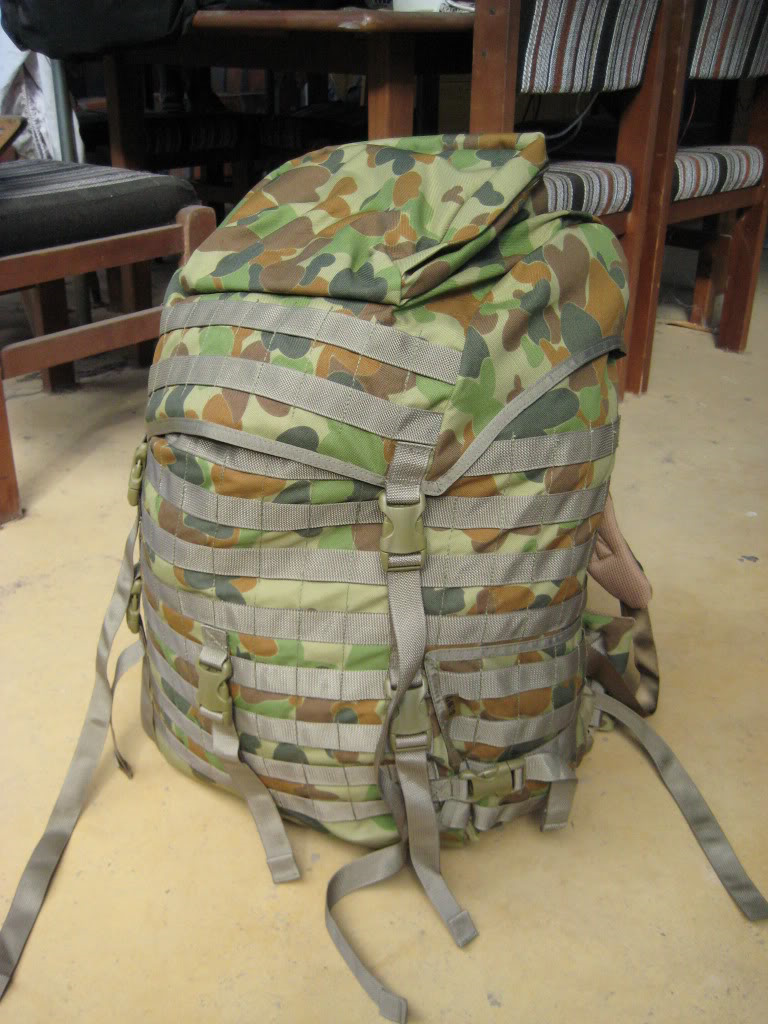

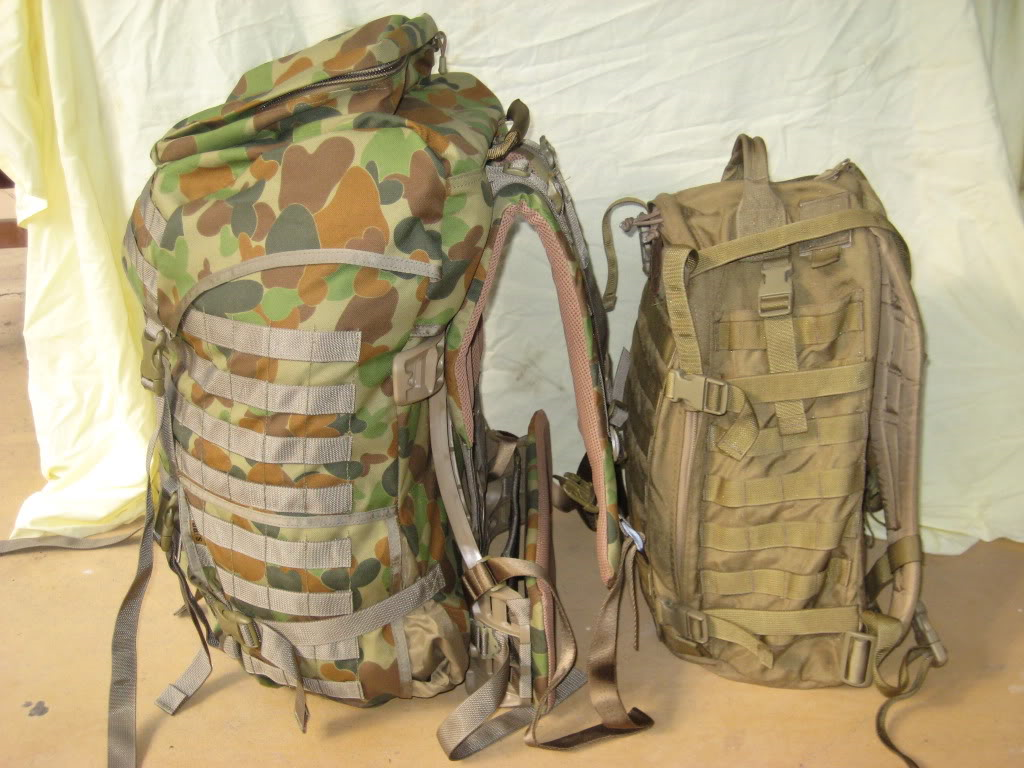
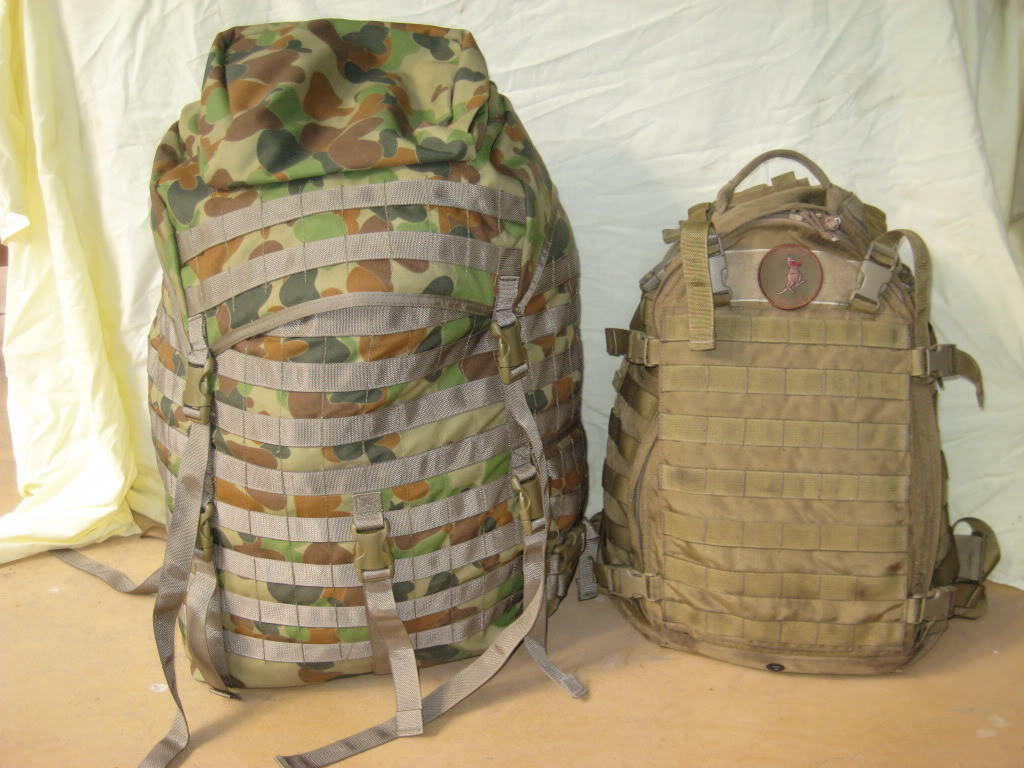
LAYOUT:
Capacity is listed as 80L (approx 4881 Cubic inches) loaded to the shoulder, it is capable of accepting more volume via an expandable storm liner.
Weight is 4760g (approx 10 Pounds).
Materials are the DEI 1606 frame and 1000D cordura., as well as various buckles, webbing (tubular and flat).
It has some interesting features.
FRAME –
Fitted with the DEI 1606 Gen3 MOLLE frame. This is the smaller frame than the old Gen1 1604 which can be used to retrofit ALICE packs. According to the SORD website, the “re-curved load stabilizer bar that spans the wearer’s shoulders. This bar cradles the load at the optimum balance point for lateral load stability while effectively distributing pressure over the shoulders and down to the hips. Because the stabilizer bar is located at the torsion node point created by the shoulders and hips twisting the frame in opposite directions while the wearer walks, the bar does not pitch the load side to side; the cradling ends of the bar only roll on the latitudinal axis.”
This apparently helps secure the load to the pack and frame combination, but not to the wearer. Quite an important point to remember for later.
HARNESS –
Shoulder straps are quite broad, padded and comfortable. There is wicking material on all surfaces interfacing with the wearer. What struck me as strange though, was the tri-glides at the top of the harness straps.

They’re on backwards. Such that they cannot be adjusted on the fly by the wearer.
For me, this was acceptable more than ten years ago when I didn’t know any better. But I’ve found out since (through personal experience and having knowledgeable people teach me) that these strap adjustments are necessary when traversing different terrain, like climbing and descending slopes and gradients with greater comfort. By not having these able to be easily adjusted, more pain and suffering than necessary is inflicted upon the wearer.
I find that the capability to adjust the harness on the move, when the load starts settling down on me, can aid greatly in reducing fatigue levels, especially when ground must be covered rapidly. Buckles for the harness straps adjustment are standard tri-glides. No quick release is fitted. The webbing running through these tri-glides is 20mm tubular. Length of the tubular webbing is quite long, an excellent idea. A lot of other pack manufacturers tend to leave these straps quite short, in their world, no-one wears bulky clothing or equipment apparently.
One thing to worry about though, is that tubular webbing like this will turn into rope when wet.
So at least the harness straps of the FPL will fit over the body when Combat Body Armour is worn. No idea how this pack will interface with CBA otherwise, nor do I have any idea about comfort levels.
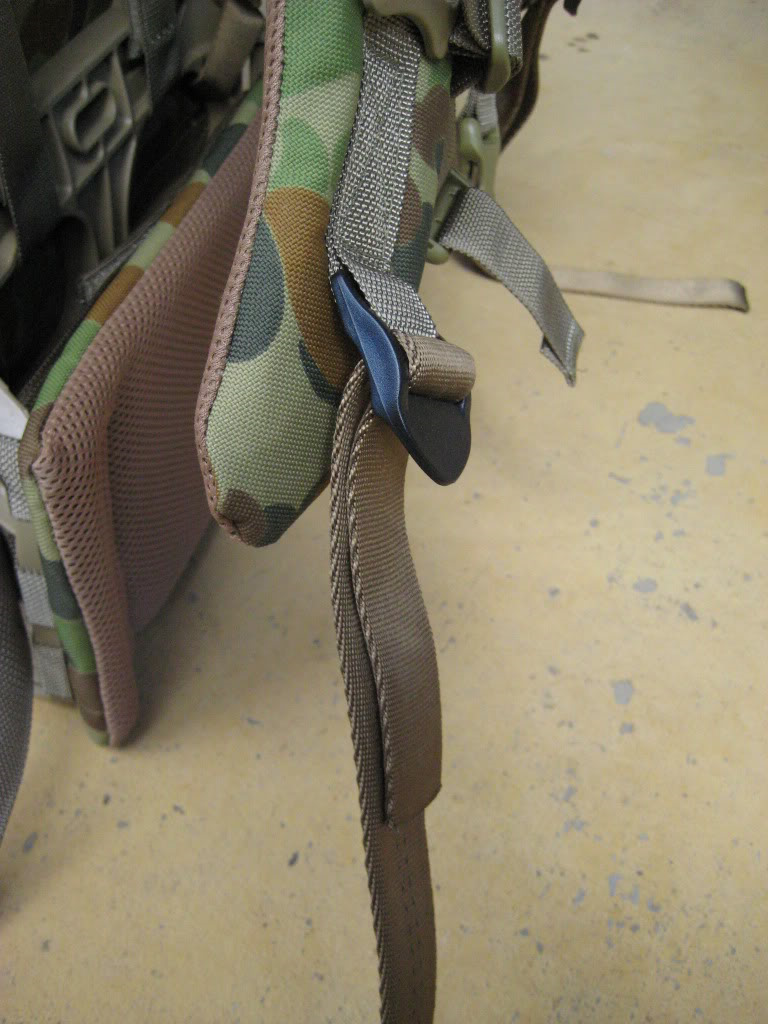
The tubular webbing however, felt “unfinished”. The running ends were only heat sealed with a hot knife, but not sewn doubled over for anti-slip ends. I have no idea of this was to aid dumping the pack, or just a manufacturing step that was avoided.
There is capacity for a sternum strap. Strangely, whilst a sternum strap is present, there is no capacity for a hip-loading belt. Let me tell you, from personal experience, that a hip-loading belt is essential for carrying heavy loads without causing spinal or muscular damage.
Back length of the harness is adjustable, although because of the incorrectly installed tri-glides at the top of the harness, it’s a very fiddly process. I’m still not entirely sure I have the harness as comfortable as I could get, since it is so damn fiddly. Adjustment is via Velcro panels, which left wondering why this was done. However, since the harness doesn’t seem to interact with the human body too well, this is a moot point.

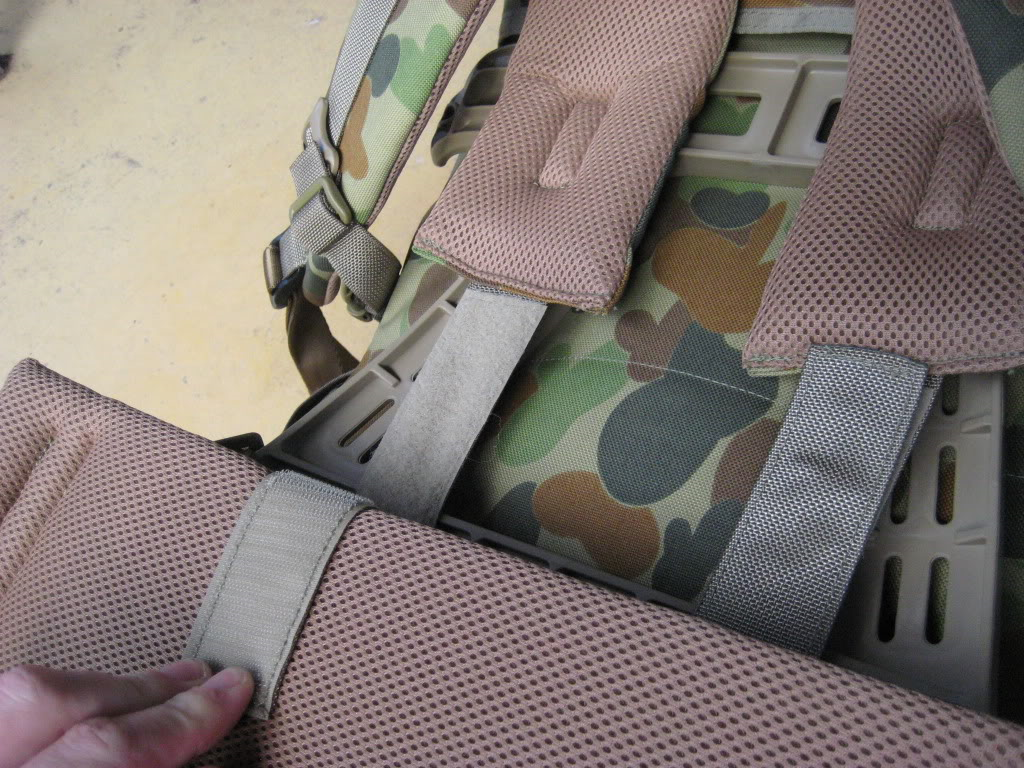
Just like the old ALICE pack, there is kidney pad. Unlike the old ALICE system, there is no capacity for any sort of hip loading belt (or gut belt as it used to be on the ALICE), as mentioned earlier. I found this strange, given current trends in load bearing. On the other hand, due to the backwards and insular nature of the ADF procurement of load bearing equipment at the moment, no new ideas are being allowed to enter, let alone common sense. We (as in ADF high command) are still wedded to the concept of a back-breaking pack without the benefits of the latest 40 years of research and development. I strongly feel this has reflected on our local load bearing equipment suppliers who fear to stray from what is “acceptable” to our procurement agencies with their limited technical knowledge.
There is a drag-handle attached to the frame/harness. It’s quite nice. It has some sort of stiffening material, which feels like a length of rubber tubing within the webbing to prevent the weight of the pack crushing the fingers. The only thing I don’t like, is it’s a bit short for use with gloves, or if you have big hands. Since I’m no threat to many ego’s, my small, delicate little hands fitted in the drag-handle with nary a problem.
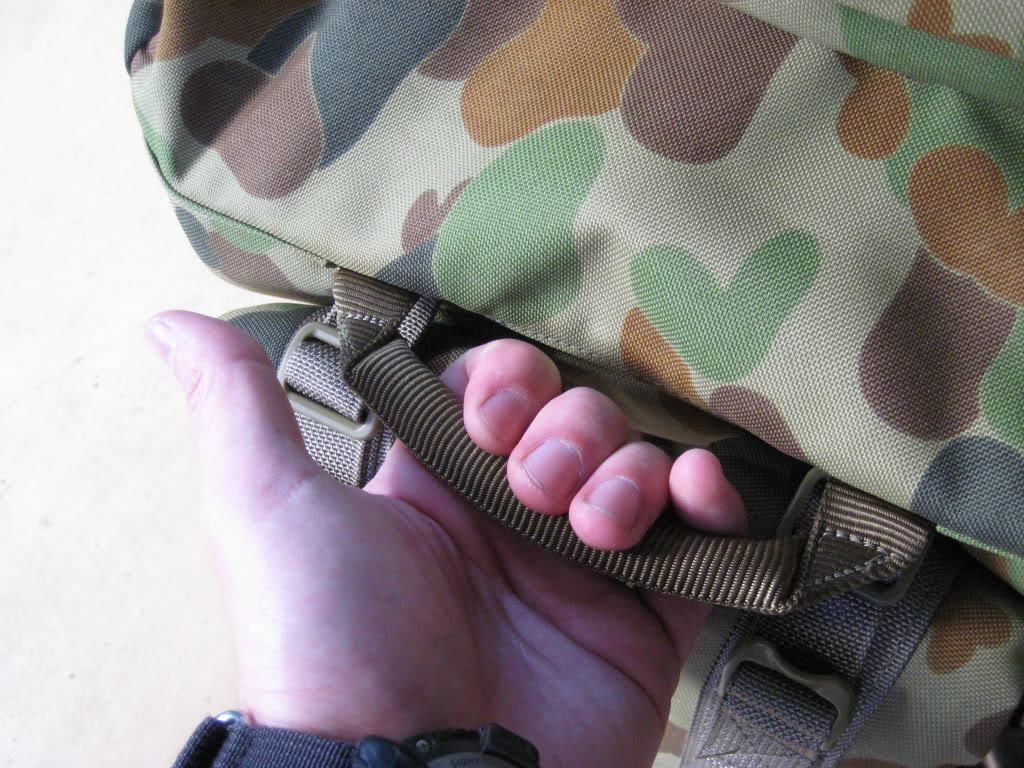
RUCKSACK –
Exterior of the rucksack is covered with PALS rows for attaching modular pouches. As mentioned in my previous pack reviews, I really like this feature. It allows the balance point and load to be customised to suit the user. An excellent idea. There is a sleeping bag access portal on the bottom right of the pack, secured via a flap with FASTEX clips, and a draw-string storm collar. I like the sleeping portal lid, it has PAL channels to ensure the external pouch load can be mirrored for balance, and is chamfered/profiled to cover the bottom corner of the pack reducing the chances of a snag. This is an area that my Crossfire packs could be improved on. This portal opens straight into the main compartment, with no other internal organisation other than the zip accessed shelf inside the rucksack. This shelf is the only internal organisation within.
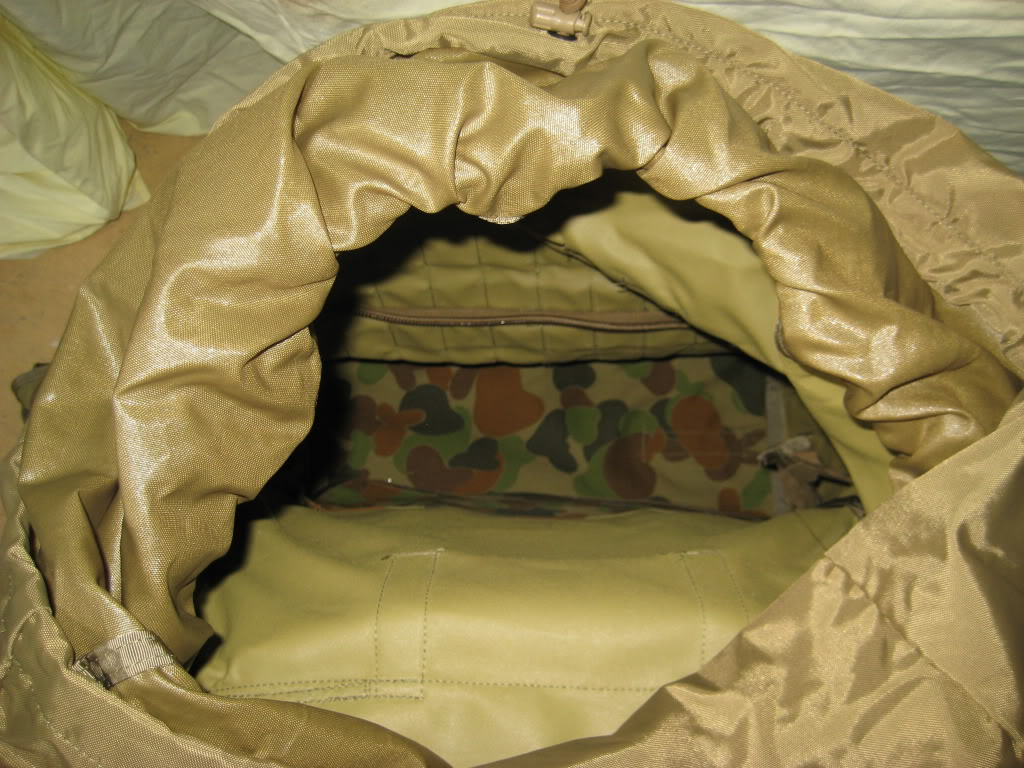
There are some compression straps on the bottom of the pack, similar to the old Australian issued ’94 pack, covering the sleeping bag tunnel. I assume these straps are for securing such items as a poof mat/ground sheet, since they have no structural impact on the rest of the pack, nor the load. They don’t even impact the working height of the rucksack too much either.
There are no other compression straps on the pack.
There are also no grommets in the main rucksack compartment.
The lid has a claymore pouch on top, accessed via zip. The zip reaches around over three quarters of the pouch, allowing very fast and easy access to contents stored there. Ergonomically, I find the claymore pouch perhaps a little bit too close to the wearer. When the pack has a decent load stowed away (above the shoulder line), this pouch has a chance to hit the wearer in the back of the head.
Under the lid has a mesh pocket, accessed via zip, which is nice to stow smaller items.
Rucksack itself is secured via a 2 level drawcord storm collar. I really like the drawcord system. I’ve mentioned in my review of the Crossfire DG-3 and DG-8 that I’m not a fan of the dry-bag like roll top system used on the latest DG series. I find a drawcord faster and easier to use, and not as finicky as the roll top. The two draw cords used by SORD allows for flexibility when the load is bigger than expected, or other mission/environmental considerations are at play.


Only the male ends of the FASTEX clips used on the FPL can be field replaced (ie. On the running end of the straps). In other words, buckles and clips are not field replaceable on this pack. Break the female end, and you need a someone talented with this domesticated “sewing” job description for repairs.
ACCESSORIES –
The FPL comes with four large exterior pockets, very similar to the old Brit Bergan pouches. Each pouch is about 10L in capacity. They have Molle attachments at top and bottom to attach to the pack. The lid is secured via Fastex clip and a drawstring with tube lock. Pouches are also fitted with grommets.
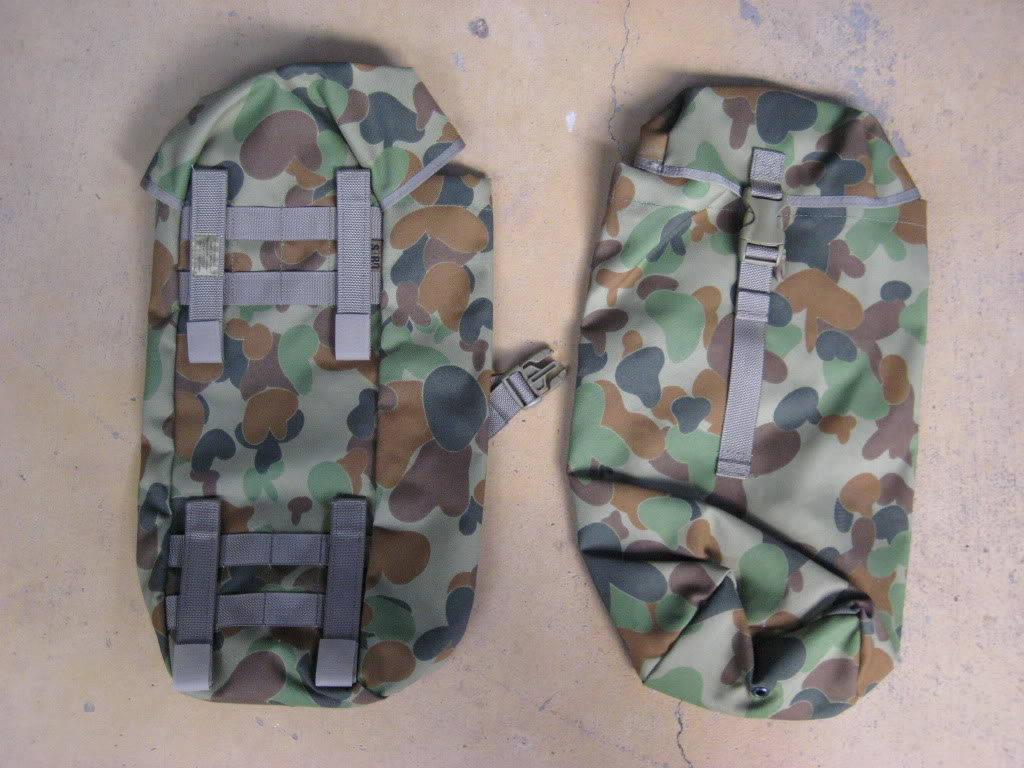
Also included in the package was the optional sternum strap.
PERSONAL ASSESSMENT:
When I first received the package in the mail, and opened it up, I was struck by how reminiscent of the old ALICE pack I used to carry when I was serving. This little blast from the past (now more than 5 years now since I upgraded away from the ALICE system) was further reinforced when I looked at the harness system.
As previously mentioned, there was no way to adjust the harness system on the fly/march. The tri-glides on the harness are actually installed backwards, and do not allow the wearer to adjust the harness straps unless the pack is removed. For a piece of equipment where more than half my body weight may be carried for long periods, I find this utterly unacceptable in this day and age.
Actual usage of the pack was part of my usual PT training. Loaded with 20kg’s (approx 44lbs), once a week I do an 8km (4.97mile) walk around town. I also do an interval session, 4mins running up and down my stairs (see one of my posts in the Lightfighter workout thread) for 4-6 sets. I’ve worn the FPL for the last couple of weeks. During physical activity, I found the FPL rather uncomfortable to wear. With only a sternum strap, the whole harness was uncomfortable, it felt like it was crushing my ribs. Without the sternum strap, my ribs felt ok, but I could still feel my back and shoulders straining in a bad way. The pack itself would bounce all over the place. This would upset my balance climbing the stairs, and placed more strain and stress on my knees and back. This was exacerbated by the lack of compression straps on the rucksack, allowing the load within to flop about even more.
The lack of hipbelt was also felt by my back and shoulders, since the entire load was being hung up on and fully supported by those body parts. To be perfectly honest, after being spoilt by high end gear for the last few years, this was a downward step for me. Think of driving a Mercedes or BMW for years, then being forced to drive a Trabant. This is similar.
Quite honestly, after stepping away from ancient ergonomic technology some time ago, it really hurt to wear this pack for any length of time. Considering the load I was carrying was only 20kg’s (44lbs) I shudder to think how much more pain and discomfort I’d be in with a heavier load with ammunition and mission-essential stores added in.
CONS –
As mentioned previously, the adjustability of the harness sucks compared to other packs I’ve used. It’s an upgrade from anything previously designed and issued by the ADF in-house, but that’s about it. Lack of hip belt for me is a no-go, utterly unacceptable in this day and age. I still carry back strain injuries from humping Aunty ALICE through the scrub in this configuration from when I was serving.
Having said that though, I can appreciate where a serving digger may not be able to use a hip-loading pack to full effect at this junction in time, due to idiotic policies from their chain of command about carrying their load in certain, outmoded methods.
Thank the Dark Lords I had an enlightened chain of command that allowed me to be a responsible adult when I was serving, and had a lot of lee-way to use kit that actually worked.
But, there has to be ways and means of carrying the required load as directed by certain units, with a pack fitted with a hip loading belt and belt mounted webbing.
Lack of compression straps on the rucksack make the load carried a “dead” weight, instead of transferring the load through the frame to interact better with the body. A lovely, flexible frame is fitted to the FPL, yet an opportunity to fully utilise its properties seems to have been missed. A “live” load will also aid in reducing fatigue inflicted to the wearer. This has been observed on the DG-6 when I first wore it. It’s also able to be evidenced by walking into a good bushwalking shop, and have a knowledgeable assistant fit you for a pack. One can feel the difference between a “dead” and “live” load immediately. The amount of fatigue reduction has to be experienced first hand.
On other fronts, if you have to carry a manpack radio, there is no capacity with this pack to do so comfortably. There are no ports for handsets, nor any decent way to access the radio without having to open the pack up completely.
PROS –
The FPL is a bloody well made pack. Construction standards are excellent. It’s bomb-proof.
Appropriate areas are reinforced. The designers experience to exposure of field conditions really shows.
I quite like the frame, being quite suitable for a wider range of individual sizes than previous generations from DEI and a lot of competitor’s kit on the market. But as mentioned, some more work to integrate the frame’s interaction with the rucksack and wearer would be of great benefit. The size of the pack is good, it carries a useful load, whilst still being easily manoeuvred through thick scrub due to the physical sizing of the pack between the shoulders and below head level.
SUMMARY:
All up, I think that whilst very well made, and a step in the right direction, the SORD FPL lacks somewhat in the ergonomics and comfort scale compared to other entries in the market. SORD makes awesome pouches and fighting rigs, it’s just that this pack doesn’t seem to have the design experience behind it.
Posted in Long Range, Military, Packs & Webbing, SORD Australia by 22F with 17 comments.
Leave a Reply